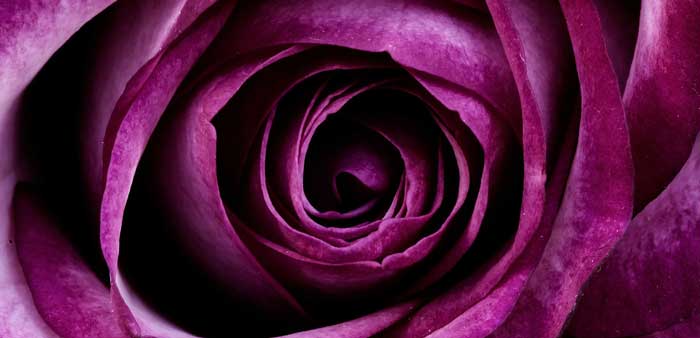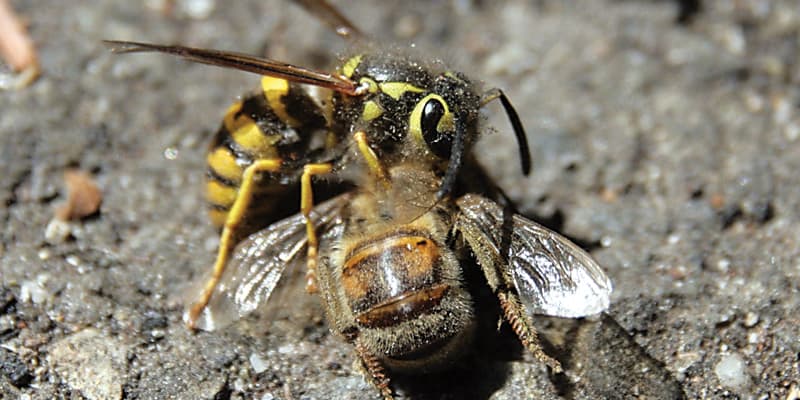Australia’s love affair with imported fresh flowers runs the risk of introducing deadly insect invaders into the country, warns Tim Low.
Insects are entering Australia on fresh flowers in huge numbers, putting our agricultural industries and environment at risk. Government statistics indicate 15,500 interceptions of live insects and mites from March 2018 to the end of December 2019. Most were probably of multiple individuals. These are enormous numbers.
Australians are sixth in the world as per capita consumers of flowers, with imports in a normal year exceeding 120 million stems. Fresh flowers and foliage are the main pathway by which insects enter Australia, and are responsible for about a quarter of all interceptions.
For a long vase life flowers have to travel very quickly from farm to retailer, which means they are flown into Australia and most insects hidden in the flowers survive the ride. The risk of them slipping through quarantine was the topic of a Landline episode I was part of in July, representing the Invasive Species Council.
Major crop pests are turning up on imported flowers, including the American cotton bollworm (Helicoverpa zea), rose beetle (Adoretus versutus) and serpentine leafminer (Liriomyza huidobrensis). Between them, these insects attack just about every kind of vegetable and fruit. These and other insects could pose serious threats to native plants, but very little is known about this.
The leafminer, known to harm more than 300 plant species overseas, was intercepted 22 times in 2018-19. This South America species reached Britain on imported chrysanthemums in 1989, and soon spread to vegetable crops, inflicting severe damage on lettuces. In the US it is often intercepted on imported chrysanthemums, and these flowers are also bringing it to Australia, without it having established here (yet).
Thrips, aphids and other bugs
Foreign growers often release predatory ladybirds and parasitic wasps into their greenhouses to control flower pests, and these are some of the insects of concern reaching Australia. But the main insects arriving are thrips, followed by aphids and other bugs.
Australia used to grow all its own flowers, but countries with low labour costs and harsh working conditions have driven most of our growers out of business. At the same time, flower consumption has grown. Floral designer John Immanual Grima, who specialises in big luxury events, told ABC TV’s Landline it was not unusual for one client to spend $150,000 on flowers. When Grima needs 15,000 stems of one rose variety for one wedding, Australian growers can’t always meet the need. Landline showed footage of a vast room bedecked with hundreds of white roses.
Landline also interviewed flower importer Craig Musson, who said Australian consumers prefer large-headed roses. Flower heads 7-8 centimetres across are achieved by growing roses more than 2600 metres above sea level, he said, so Australia imports them from Kenya, Ecuador and Colombia.
Roses are the most popular flowers in Australia, and Musson suggested that maybe 80-90% of those sold in Australia are imported. They pose very high risks to Australia because the layered petals provide many hiding places that are difficult to inspect.
Imported flowers used to be fumigated with methyl bromide on arrival in Australia to kill pests. Australia began fumigating flower imports back in 1996 but, faced with soaring imports, as countries with cheaper labour upped their market share, a system of trust was introduced. Overseas growers could certify their blooms were fumigated before packaging.
Introduced in 2013, this scheme was scrapped in 2017 after the number of insect and mite detections soared – rising from 1000 a year to more than 4000. The numbers have been reduced but are still unacceptable.
Landline interviewed Peter Creaser from the federal agriculture department saying there hadn’t been any incidents where the insects or pests have made it past quarantine. He is in no position to say that, because when new insect pests turn up in Australia, their mode of entry is often unknown. Since only samples of all the flowers imported are inspected, many flowers-borne pests will have entered Australia undetected.
Creaser said that ‘if there are any live pests of concern, we will have those flowers treated here in Australia.’ His mention of pests ‘of concern’ is telling. If a pest insect is identified as a foreign species already in Australia, or is not on the list of species of concern, the flowers that harbour it can be brought in. That sounds unbelievable, but accords with World Trade Organisation rules that require risk assessments to justify the rejection of foreign species.
Australia has signed up to a rule that says our level of border biosecurity protection will be ‘aimed at reducing risk to a very low level, but not to zero.’ Allowing cut flowers routinely contaminated with thousands of pests [or other similarly alarming stat] is hardly a very low level of risk.
The treatment of flowers he mentioned often doesn’t work. In 2015 the Interim Inspector-General of Biosecurity released a report on the effectiveness of biosecurity controls for imported flowers, which found that live insects are sometimes found by chance after two fumigation treatments. Rather than adopting a critical tone about this and other failings, including inadequate searches and insecure packaging, the Interim Inspector-General decided that ‘overall, the department is managing relevant biosecurity risks in an appropriate manner’.
She advised that ‘The department should consider instituting regular or random testing for efficacy of on-arrival fumigation’ [my emphasis].
After watching the Landline segment I was left wondering why Australia is placing agriculture and the environment at so much risk for something as frivolous as flowers, which can, after all, be grown in Australia for a reasonable cost. The answer seems to be that consumers have the right to be gratified for the least expense, no matter how extravagant their expectations.
When I wrote Feral Future back in 1999 I had an employee of the quarantine service tell me – off the record – that Australia should not be importing flowers, and I am sure he would say the same thing today. I suspect that many employees in the Department of Agriculture, including entomologists and inspectors, would be of the same view.
One proposal going around is that country of origin labelling be introduced for flowers. That would not stop flower imports with insects but would do something to reduce the volume.
It would be far better to be tougher on letting in goods that are proven carriers of exotic pests. Our plant industries and natural environment cannot afford the consequences.
References
The ABC Landline segment by Lucy Barbour, Pests in the Petals, can be seen here:
- The ABC Landline segment by Lucy Barbour, Pests in the Petal
- Department of Agriculture and Water Resources and Water Resources (2018) Draft Pest Risk Analysis for Cut Flower and Foliage Imports—Part 1.
- Department of Agriculture, Water and the Environment (2020) Draft Pest Risk Analysis for Cut Flower and Foliage Imports—Part 2.
- Interim Inspector-General of Biosecurity (2015) Effectiveness of biosecurity controls for imported fresh cut flowers.




